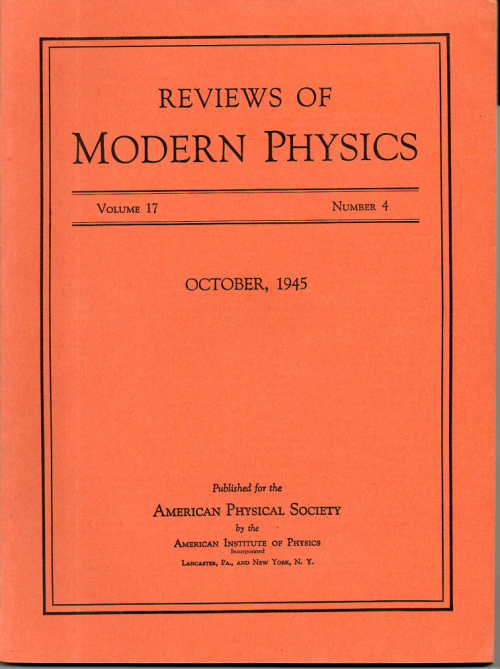 SMYTH, Henry DeWolf. "Atomic Energy for Military Purposes". Being the entire issue for October, 1945, of Reviews of Modern Physics, pp 351-491. Original printed wrapper. Good copy. $125 Formerly the copy of Al Wattenberg, a present-at-the-creation physicist under the stands at Chicago in 1942 (as we read from University of Illinois/Urbana):
SMYTH, Henry DeWolf. "Atomic Energy for Military Purposes". Being the entire issue for October, 1945, of Reviews of Modern Physics, pp 351-491. Original printed wrapper. Good copy. $125 Formerly the copy of Al Wattenberg, a present-at-the-creation physicist under the stands at Chicago in 1942 (as we read from University of Illinois/Urbana):
In 1941, Al was close to finishing his PhD but the war effort intervened. Fermi invited Al to join his group, studying the fission of uranium. The group included Herb Anderson, Bernard Feld, Walter Zinn, and Leo Szilard. As a young and talented instrumentalist, Al learned to use Geiger counters, served as a draftsman and a machinist, and maintained and built photon and neutron detectors. Herb Anderson trained Al to make neutron sources and, after 1943, Al made and maintained all the radium and beryllium sources for the entire Manhattan Project. He also worked with Fermi on measuring the neutron activity in the uranium graphite structure. It was here that Al observed Fermi’s enormous thoroughness and redundancy in experimental work, an example that affected Al’s approach to experiments for the rest of his life.
In 1942, the group moved from New York to the University of Chicago. They made quick progress in controlled fission, working 18-hour days, while learning about the theory of chain reactions at lectures given by Fermi. The construction of the first pile started on November 16, 1942. On December 2, 1942, the group obtained the first controlled nuclear chain reaction. Eugene Wigner presented Fermi with a bottle of Chianti, which everybody present signed. As a young member of the group, Al cleaned up after the event—and kept the historical bottle until 1980, when he donated it to Argonne National Laboratory.
The Smyth Report is a significant event in the history of physics as it preemptively determined the stuff that could and couldn't be publicly discussed about the making of the bomb. Even the cautious and methodical Lee Groves came 'round fairy quickly to the publication of the Report, which made its first appearance in print in a separately printed format just 12 days after the explosion at Hiroshima.




Comments